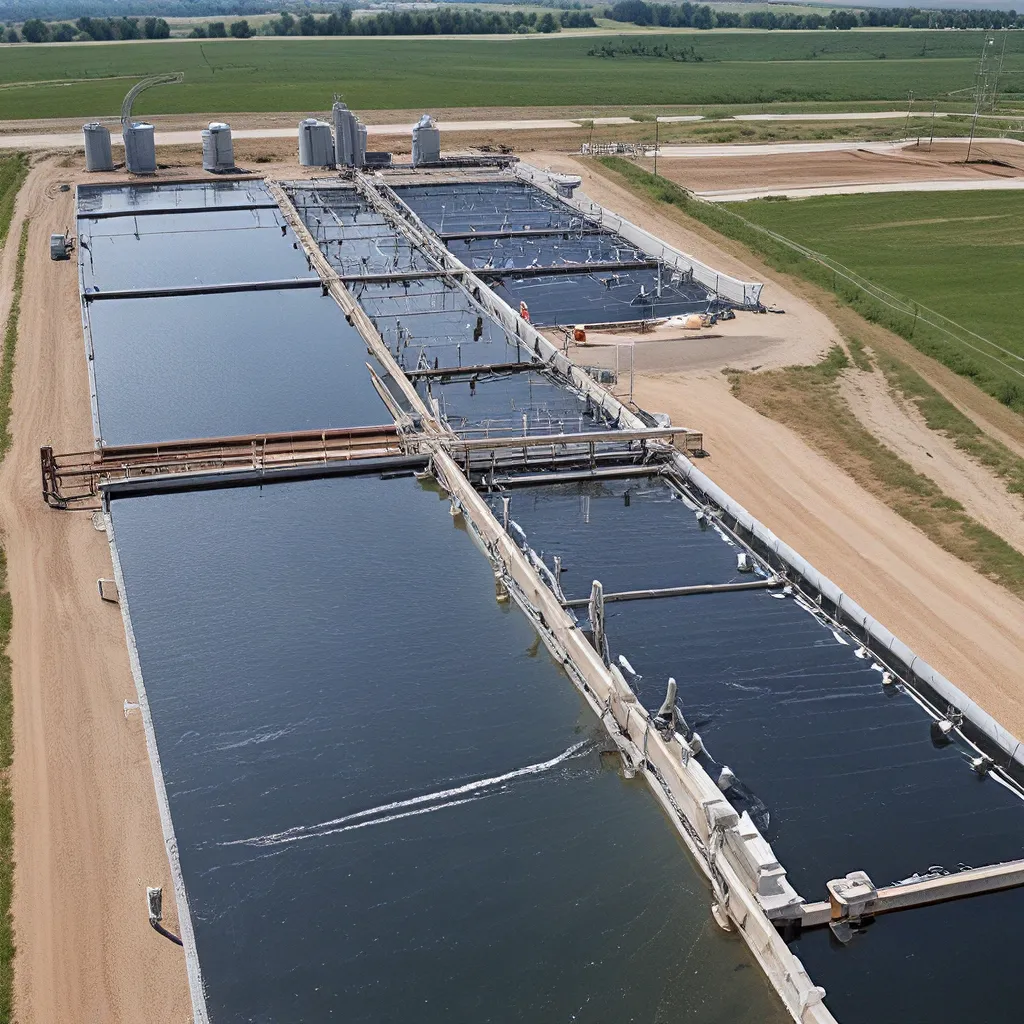
As someone who’s been in the wastewater industry for years, I’ve seen firsthand how energy-intensive these operations can be. It’s a constant challenge to keep costs down while delivering reliable, high-quality services. But you know what? I think I’ve found a game-changing solution that could revolutionize the way we power our wastewater facilities – renewable energy.
Powering Up with Green Solutions
Let’s face it, traditional energy sources like fossil fuels are not only bad for the environment, but they’re also eating up a huge chunk of our budgets. In fact, did you know that drinking water and wastewater systems account for around 2% of the total energy use in the United States? That’s a staggering amount, adding over 45 million tons of greenhouse gases to the atmosphere every year!
But here’s the good news – incorporating energy efficiency practices and renewable energy sources into our wastewater plants can save us 15 to 30% on our energy bills. That’s thousands of dollars in savings, with payback periods of just a few months to a few years. It’s a win-win for our bottom line and the planet.
Renewable Energy Options for Wastewater Facilities
So, what are the renewable energy options we can explore for our wastewater facilities? Well, the possibilities are endless!
Solar Power
One of the most popular and accessible renewable energy sources is solar power. By installing solar panels on the roofs of our wastewater plants or on nearby land, we can generate clean, renewable electricity to power our operations. And the best part? Solar technology has become increasingly affordable and efficient in recent years, making it a viable option for even smaller facilities.
Wind Turbines
If you’ve got the right geographical conditions, wind turbines are another fantastic renewable energy solution. By harnessing the power of the wind, we can generate electricity to offset our energy consumption. And let me tell you, there’s something pretty cool about seeing those giant blades spinning away, powering our wastewater operations.
Biogas and Cogeneration
But wait, there’s more! Wastewater facilities have a secret superpower – they can actually generate their own energy. How, you ask? Through the magic of anaerobic digestion and cogeneration.
Here’s how it works: the organic matter in our wastewater is broken down by bacteria in the absence of oxygen, producing a biogas that’s rich in methane. We can then use that biogas to fuel a combined heat and power (CHP) system, generating both electricity and heat for our facilities. It’s a game-changer, allowing us to become more self-sufficient and reduce our reliance on the grid.
Purchasing Renewable Energy
Of course, not every facility has the space or resources to install their own renewable energy generation. But that doesn’t mean we’re out of options. Many utilities and power providers now offer the opportunity to purchase renewable energy directly from the grid or through renewable energy certificates (RECs).
RECs represent the environmental benefits of power generated from renewable sources, and they enable organizations like ours to choose renewable power even if our local utility doesn’t offer a green power product. It’s a hassle-free way to incorporate renewables into our energy mix and reduce our carbon footprint.
The Road to Energy Efficiency
Now, I know what you’re thinking – “Renewable energy sounds great, but how do I actually get started?” Well, my friends, it all starts with understanding your facility’s baseline energy use.
The first step is to conduct a thorough energy audit, either through a third-party or a self-assessment. This will help you identify the energy-intensive processes in your facility, like pumping and aeration, and prioritize where to focus your efficiency efforts. Once you have that baseline data, you can start exploring the renewable energy options that best fit your needs and your budget.
The Future of Wastewater Energy
As exciting as all of these renewable energy solutions are, I think the most thrilling part is the potential for even greater advancements in the years to come. Researchers are constantly exploring new ways to harness energy from wastewater, whether it’s through innovative biogas technologies, microbial fuel cells, or other cutting-edge approaches.
And you know what really gets me jazzed? The fact that Alpha Wastewater is at the forefront of this renewable energy revolution. They’re not just talking the talk – they’re actively working with utilities and municipalities to implement these energy-saving solutions and help transform the wastewater industry.
So, if you’re ready to take your wastewater facility to the next level, it’s time to start integrating renewable energy into your operations. Trust me, your bank account and the planet will thank you.
Embracing the Power of Renewable Energy
I know change can be daunting, but when it comes to renewable energy in wastewater facilities, the benefits far outweigh the challenges. By leveraging solar, wind, biogas, and other green solutions, we can reduce our environmental impact, cut our energy costs, and become more self-sufficient in the process.
And let’s not forget, this is an evolving field with ongoing research and exciting new developments happening all the time. Who knows what the future may hold? Maybe one day we’ll be powering our entire wastewater operations with energy harvested straight from the sewage itself. The possibilities are truly endless.
So, my fellow wastewater warriors, let’s embrace the power of renewable energy and lead the charge towards a more sustainable, cost-effective, and environmentally-friendly future. The time is now to break free from the shackles of traditional energy sources and reap the rewards of going green.
Are you with me? Let’s make it happen!